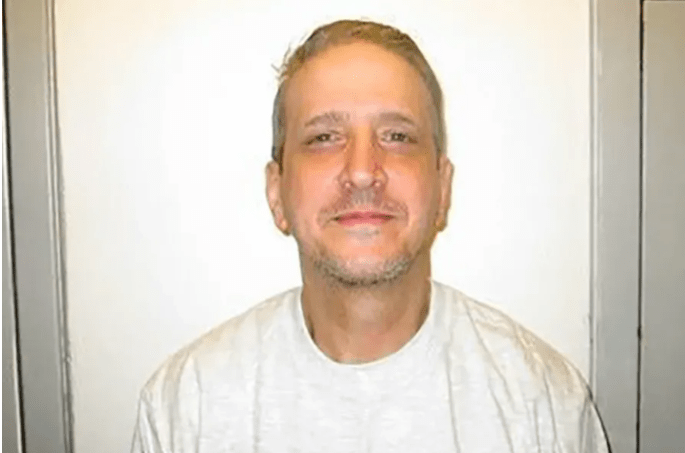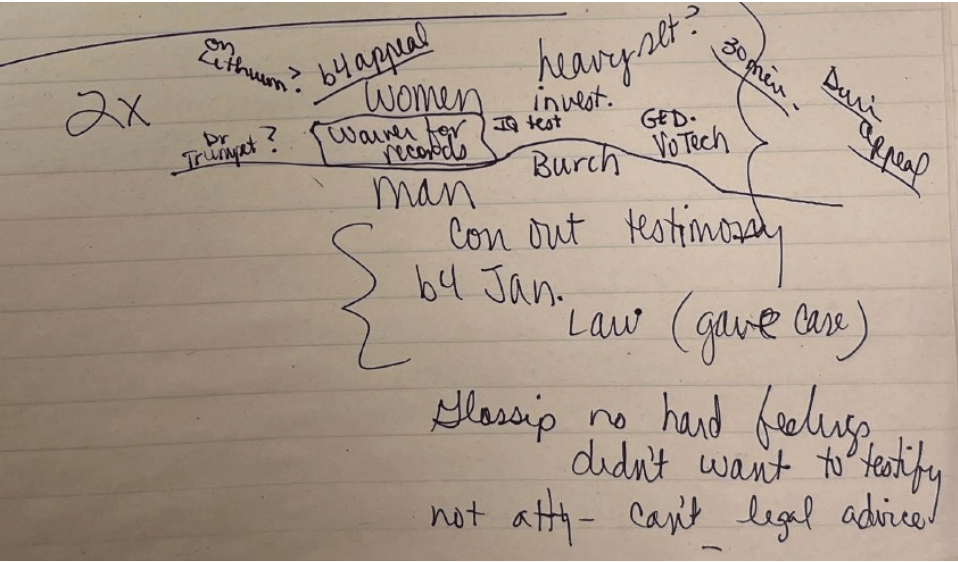
In 2004, Richard Glossip was convicted of murder and sentenced to death. Since then, the case against him has completely fallen apart.
The state of Oklahoma, which is currently holding Glossip on death row, commissioned two investigations looking into Glossip’s 20-year-old conviction. The first, conducted by the law firm Reed Smith on behalf of a committee of state lawmakers, determined that a long series of errors, destroyed evidence, and police failures “fundamentally call into question the fairness of the proceedings and the ultimate reliability of the guilty verdict against Glossip for murder.”
SCOTUS, Explained
Get the latest developments on the US Supreme Court from senior correspondent Ian Millhiser.
Email (required)Sign UpBy submitting your email, you agree to our Terms and Privacy Notice. This site is protected by reCAPTCHA and the Google Privacy Policy and Terms of Service apply.
A second investigation, commissioned by Oklahoma Attorney General Gentner Drummond, a Republican, and led by a former district attorney, determined that “Glossip was deprived of a fair trial in which the State can have confidence in the process and result.”
And yet Glossip remains on death row, despite the fact that Drummond has become his unlikely advocate. In a brief filed in the Supreme Court, Drummond argues that “by suppressing important evidence about the State’s indispensable witness and then knowingly eliciting false testimony on the same subject,” prosecutors violated the Constitution when they tried and convicted Glossip.
Drummond went to the Supreme Court because Oklahoma’s own institutions resisted his pleas to retry Glossip. The state’s highest criminal court denied the request to toss out Glossip’s conviction, claiming, among other things, that a crucial new piece of evidence “does not create a reasonable probability that the result of the proceeding would have been different” had Glossip’s lawyers been aware of it at his trial.
The state’s parole board, meanwhile, split 2-2 on whether to grant relief to Glossip — with one member recused because his wife was the lead prosecutor against Glossip. Without a majority vote from the parole board, the state governor may not pardon Glossip or commute his sentence (although the governor can delay the execution for 60 days).
Though the two state investigations into Glossip’s conviction were broad, and uncovered a long list of questionable actions by police and prosecutors, the specific legal issues now before the Supreme Court are narrow. Specifically, both Glossip and Drummond identify two possible constitutional violations arising out of a single document that was recently disclosed to Glossip’s lawyers.
Four words in that document, which the state shared with Glossip’s lawyers in January 2023, suggest that prosecutors kept a key piece of information from Glossip: an essential witness against the former motel manager was treated by a psychiatrist for a serious mental illness. Had Glossip’s legal team known of this information at trial, they could have used it to undermine that witness’s credibility and to undercut the state’s entire murder case against Glossip.
No matter how the Supreme Court rules, Glossip most likely will not get off scot free. The state maintains that the new evidence does not prove that Glossip is actually innocent, and it reserves the right to retry him. Indeed, the Supreme Court won’t even consider all of the exculpatory evidence listed in the Reed Smith report — instead focusing on the one newly revealed document which suggests that prosecutors violated the Constitution.
And it is far from clear that this document will be enough to persuade this Supreme Court, which has a history of arguing that state convictions should remain final even if they are later revealed to be unreliable, to grant Glossip a new trial.
The flimsy case against Glossip, explained
In 1997, Justin Sneed, a maintenance worker at a motel owned by Barry Van Treese, killed Van Treese with a baseball bat. At the time of this crime, Glossip was the manager at the same motel.
Though Glossip was not present when Van Treese was killed, he was convicted of murder in 2004 on the theory that he hired Sneed to kill Van Treese. Sneed’s testimony against him was the only direct evidence connecting him to the murder. The state now describes Sneed as an “indispensable witness.”
It’s worth noting that regardless of whether Glossip hired Sneed to kill their boss, he is not entirely innocent. According to his own attorneys, he “spoke to police voluntarily on the day of the murder and again after he was detained the next day, admitting that he took actions after Van Treese was killed that helped Sneed after the fact.” Initially, the state charged Glossip as an accessory-after-the-fact for helping to cover up the murder and clean up the murder scene. But that charge was later upgraded to murder after police caught up with and interviewed Sneed.
There are several reasons to doubt this upgraded charge, however, and even to suspect that Sneed was intentionally railroaded by police into implicating Glossip in the murder itself. The Reed Smith investigation, for example, found that “Sneed implicated Glossip as masterminding Mr. Van Treese’s killing, but only after being led there by [the lead detective’s] inappropriate interrogation tactics.”
That investigation found that detectives mentioned Glossip’s name six times during the first 20 minutes of his interrogation of Sneed, and “mentioned nobody else before Sneed confessed and pointed the finger at Glossip.” Sneed implicated Glossip, according to the Reed Smith report, “only after [lead] Detective [Robert] Bemo interjected his views that Sneed did not act alone, that Sneed could help himself, that Glossip was arrested, and that Glossip was blaming Sneed for the murder.”
The report also found other significant flaws in the police investigation. Among other things, police collected a surveillance tape from a gas station near the motel, which could have revealed information about Sneed and Glossip’s movements the night of the murder, but the tape appears to have been lost. Police never searched the motel rooms where Sneed and Glossip lived, nor did they search the motel office. They also did not interview potentially important witnesses, including “individuals who Sneed was staying with immediately after the murder.”
And, on top of all of this and other failures listed in the report, the state “destroyed a box of evidence containing 10 items” before Glossip’s 2004 trial even took place, and did so at the request of the Oklahoma County District Attorney’s office. This evidence included “key physical evidence from the crime scene that could have been tested for the first time, such as Mr. Van Treese’s wallet which was never checked for fingerprints.”
In any event, these failures by police and prosecutors are not before the Supreme Court. The specific constitutional violation alleged by Glossip and Drummond arises out of a single page of handwritten notes by prosecutor Connie Smothermon, which wasn’t disclosed to Glossip’s lawyers until January 2023.
Those notes include two somewhat cryptic references, one indicating that Sneed may have been on the drug lithium, which is used to treat bipolar disorder, and other referencing a “Dr. Trumpet.”

The significance of these notes, however, quickly became clear to both Glossip’s lawyers and the state. As the state explains in its brief, at the time that Sneed was incarcerated at the Oklahoma County jail, that “jail had just one working psychiatrist in 1997 when Sneed was held there: Dr. Larry Trombka.” Both Glossip and the state agree that Smothermon’s note about “Dr. Trumpet” must have been a reference to Dr. Trombka, who would have been “the only possible treating psychiatrist and the only medical professional at the jail qualified to prescribe lithium.”
Sneed’s medical records, moreover, which the state had previously withheld from Glossip’s lawyers, “confirm a diagnosis of bipolar disorder with a treatment of lithium at the county jail.”
The state, in other words, withheld evidence that its key witness had a serious and untreated mental health disorder at the time of the murder. Worse, Dr. Trombka later said that Sneed’s mental illness could have caused him to experience a “manic episode” that may have led him “to be more paranoid or potentially violent,” and that Sneed’s condition was “exacerbated by illicit drug use, such as methamphetamine.”
Thus, the undisclosed evidence didn’t simply undercut the credibility of the state’s key witness, it suggested that Sneed may have had another motive for committing the murder. Rather than murdering Van Treese at Glossip’s urging, as the state claimed, Sneed may have done so because he was in the middle of a serious mental health episode.
What’s the actual legal issue before the Supreme Court?
Both Glossip and the state allege that this failure to reveal Sneed’s connection to Dr. Trombka violates the Supreme Court’s decisions in Brady v. Maryland (1963) and Napue v. Illinois (1959).
Brady held that prosecutors must turn over evidence that is “favorable to an accused” if that evidence “is material either to guilt or to punishment, irrespective of the good faith or bad faith of the prosecution.” So Glossip and Drummond now argue that prosecutors had an obligation to reveal that the killer, a key witness against Glossip, was treated by a psychiatrist for a serious mental illness.
Napue, meanwhile, held that “a conviction obtained through use of false evidence, known to be such by representatives of the State, must fall under the Fourteenth Amendment.” This rule applies even “when the State, although not soliciting false evidence, allows it to go uncorrected when it appears.”
The reason Napue applies to Glossip’s case is that, during Glossip’s 2004 trial, Sneed testified he was given lithium in the county jail, but he suggested that he was prescribed it by accident and that he “never seen no psychiatrist or anything.” Smothermon’s notes suggest that she knew Sneed was not telling the truth when he testified he’d never seen a psychiatrist, but that she failed to correct this false statement as required by Napue.
So is that enough to overturn Glossip’s conviction? Well, it was enough to convince Oklahoma’s top law enforcement officer that Glossip’s conviction cannot be sustained. Certainly, many judges would agree Glossip’s rights under Brady and Napue were violated here.
But, to win this case, Glossip must convince at least five members of this Supreme Court to rule in his favor. And this Court has a history of condemning men to die despite significant evidence that they are innocent.
Consider, for example, the Barry Jones case. Jones was convicted of murdering his girlfriend’s 4-year-old daughter and sentenced to die in 1995. But Jones received constitutionally inadequate representation, so the jury never heard evidence indicating that Jones is innocent. Among other things, medical experts determined that the injuries that killed his alleged victim could not have been inflicted during the time when Jones and the girl were together.
Armed with this evidence, two federal courts determined that Jones must be given a new trial.
But all six of the Republican justices reversed that decision, holding that federal courts may not even consider this evidence. They reasoned it is more important to preserve “the State’s significant interest in repose for concluded litigation” — that is, once a trial is complete, it is more important to preserve its outcome than to determine if the outcome is correct. (After the Supreme Court ruled, Jones was freed from death row because Arizona’s attorney general negotiated a deal where Jones pled guilty to second-degree murder and was resentenced to the time he’d already served.)
When both parties to a Supreme Court case agree that the court below botched a case, the Court typically appoints a third attorney to defend the lower court’s judgment. That happened in the Glossip case. The court-appointed lawyers tasked with defending Glossip’s conviction essentially argue the additional information revealed by Smothermon’s notes is too trivial to matter. “[T]he notes would have at most altered the jury’s perception of Sneed from a troubled murderer who took lithium,” they write, “to a troubled murderer who took lithium from a psychiatrist.”
Of course, the real question in the Glossip case is what evidence Glossip’s lawyers could have presented to his jury if they’d known Sneed was treated by a psychiatrist and obtained Sneed’s medical records. But this case will not turn on whether a reasonable judge would find that prosecutors violated Brady and Napue when they withheld this information.
Instead, it will turn on whether the same six judges responsible for the Barry Jones decision are willing to give Glossip a new trial.
Source: vox.com






